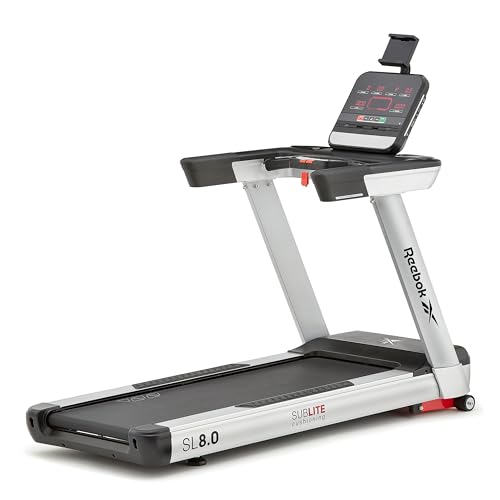Exploring the Benefits of Walking Pads: The Non-Electric Choice
In the age of modern-day fitness services, where innovation reigns supreme and elegance is typically associated with electrical machines, a brand-new pattern is emerging in practical workout: the non-electric walking pad. These simple yet effective pieces of devices are recording the interest of fitness lovers and casual walkers alike.
In this detailed guide, we will explore what walking pads are, their advantages, comparisons with standard treadmills, and offer responses to often asked concerns.
What is a Walking Pad?
A walking pad is a compact workout platform developed mostly for walking, jogging, or light running. Unlike Manual Treadmill Price which rely on electrical power, non-electric walking pads operate on a manual system. Users move themselves forward by walking or running, utilizing their own body weight.
Key Features of Non-Electric Walking Pads:
- Compact Design: Most walking pads are lightweight and foldable, making them simple to shop and transport.
- User Controlled: The speed and intensity of the workout depend upon the user's own effort.
- No Plug Required: Perfect for energy-conscious people, these pads need no power consumption.
- Silent Operation: A quieter alternative to electric treadmills, making them suitable for apartments or shared spaces.
Advantages of Using Non-Electric Walking Pads
Using a non-electric walking pad provides a variety of benefits. Below are a few of the popular benefits:
| Benefit | Description |
|---|---|
| Economical | Non-electric designs are generally more affordable than their electric equivalents, making them accessible to a broader audience. |
| Boosted Flexibility | Users can stroll or jog at their own speed, which is especially beneficial for newbies or those recovering from injuries. |
| Space-Saving Design | Due to their compact size, walking pads fit conveniently in smaller sized spaces, making them perfect for office or home usage. |
| Low Maintenance | With no electrical components, these pads require very little maintenance and are less most likely to break down. |
| Environmentally Friendly | No electricity implies no ecological impact from energy intake, making them a fantastic option for eco-conscious customers. |
Comparing Non-Electric Walking Pads to Traditional Treadmills
| Feature | Non-Electric Walking Pad | Conventional Treadmill |
|---|---|---|
| Source of power | Manual (user-powered) | Electric (plugged in) |
| Cost | Lower upfront expense | Higher initial financial investment |
| Size | Compact and portable | Larger, frequently stationary |
| Noise Level | Extremely peaceful | Can be loud, depending on motor and use |
| Customization | Limited user settings | Comprehensive settings (speed, incline, programs) |
| Physical Engagement | Higher intensity and effort needed | Much easier to use but might motivate less engagement |
How to Use a Non-Electric Walking Pad
Utilizing a non-electric walking pad is simple. Here's an easy step-by-step guide:
- Set Up: Place the walking pad on a flat, stable surface.
- Change the Pad: Ensure that it is at a comfy position for usage-- most pads have adjustable angles to tailor the walking experience.
- Warm-Up: Before making use of the pad, perform a short warm-up routine, which can consist of mild stretching.
- Start Walking: Step onto the pad and start walking at a moderate speed. As your speed boosts, you will observe the pad moving.
- Display Your Intensity: Pay attention to your heart rate and how you feel. Change your speed according to your fitness level.
- Cool off: Gradually decrease your speed before stepping off the pad, followed by cooldown stretches.
Best Practices for Using Walking Pads
To make the most of the advantages of non-electric walking pads, think about the following ideas:
- Incorporate Variety: Alternate between walking and jogging for a full-body exercise.
- Engage Your Core: Maintain great posture by keeping your core engaged while utilizing the pad.
- Hydration: Remember to hydrate before and after your workout.
- Consistency: Aim to use the walking pad regularly. Start with 15-20 minutes and gradually increase the period.
Often Asked Questions
1. How efficient are non-electric walking pads for weight loss?
Non-electric walking pads can be reliable for weight reduction when used consistently in conjunction with a healthy diet plan. Since they require more effort, they can enable higher calorie expense throughout workouts.
2. What is the weight capacity of most walking pads?
A lot of non-electric walking pads can support individuals up to 250-300 pounds, depending upon the design. Always examine the manufacturer's requirements for accurate information.
3. Exist any advised brands for walking pads?
Some popular brand names consist of InMovement, ProForm (manual models), and ECHANFIT, each providing a variety of features customized to diverse user choices.
4. Can non-electric walking pads be utilized outdoors?
These walking pads are usually designed for indoor usage. Utilizing them outdoors may expose them to climate condition that could impact their durability.
5. How do I save a walking pad?
Many non-electric walking pads are foldable. Just fold them up and save them in a closet, under a bed, or any hassle-free space.
Non-electric walking pads offer an unique and effective aerobic workout alternative that stresses simplicity and availability. By allowing users to produce their fitness regime without the limitations of power cables and complex interfaces, these pads empower people across numerous physical fitness levels.
For anybody looking for an economical, space-saving, and effective option to traditional exercise devices, exploring the world of non-electric walking pads might be the ideal next step in their fitness journey. By choosing to purchase among these flexible tools, individuals can cultivate healthier habits while enjoying the empowering experience of movement on their own terms.

